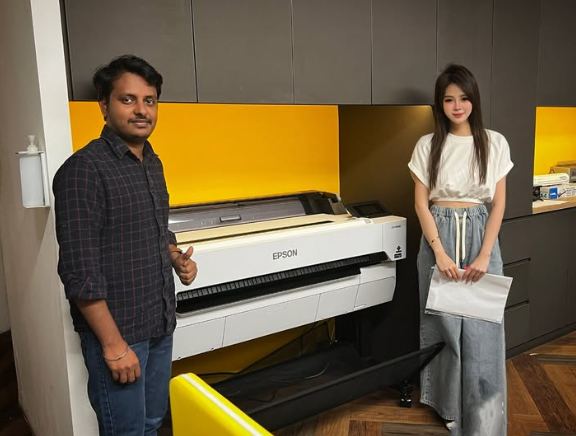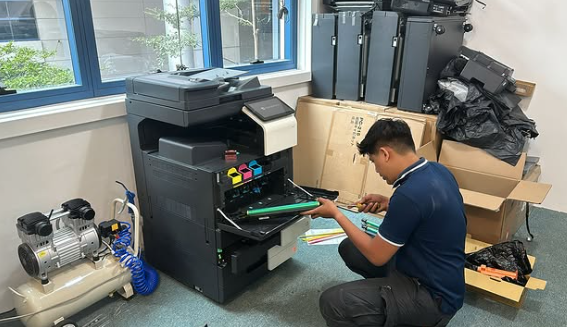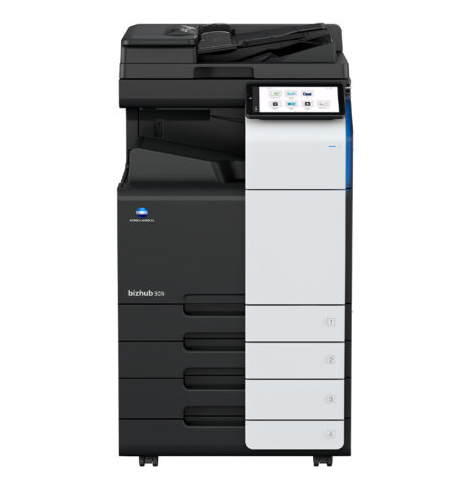
Photocopiers, in the long rhythm of daily business operations, are among those devices that, though often overlooked in their silent performance, carry the load of administrative reliability. When it comes to companies that engage with photocopier leasing companies in Singapore or explore their options through office copier rental services, one element too easily skipped is consistent upkeep. But what if maintenance were not something reactive, but rather structured? That is where this checklist becomes relevant, not as a routine obligation, but as a necessary system for stability and cost-efficiency during the full span of your leasing period.
1. Weekly Surface Checks and External Cleaning
While it’s easy to assume that external cleaning doesn’t influence the technical performance, the reality is otherwise. Machines that accumulate dust, fingerprints, or paper debris at high-touch points like control panels, scanner lids, or paper trays can start showing malfunctions that may seem internal but are surface-based. Therefore, it is advisable to assign someone weekly to take a lint-resistant cloth, ideally slightly moistened but not damp, to wipe off panels and feeding trays. Vents should not be neglected as well. Once particles start blocking airflow, the internal temperature balance shifts, and fuser units start heating unevenly, which, over time, can damage toner application.
While these tasks may appear menial, when ignored for too long, the copier begins showing lag in its responsiveness. A poorly cleaned touchscreen can register inputs inaccurately, resulting in wasted prints or command errors.
2. Habitual Daily Usage and Operating Behaviours
Every user may assume the copier is resilient, that it can manage a variety of paper types or sudden spikes in printing loads. That assumption breaks machines. Good usage behaviour is where most of the wear is either slowed down or accelerated. Always use clean, flat paper. The type must match the copier's specified tolerance; don’t insert glossy paper unless it is rated to process it. Employees in a hurry sometimes press the scan lid too hard or yank paper from an unfinished tray; all of this causes slow warping and misalignment.
Another element that must be spoken of here is supply usage. When rental machines are used, especially under managed services, original toner and drum units are usually part of the agreement. Still, there are cases where companies source cheaper refills. The result is typically leakage or internal smudging, which eventually causes blurred printing and internal cleaning demands. Consistency in supplies is non-negotiable when looking at copier longevity.

3. Monthly Checks, Internal Observations, and Toner Replacements
Each month, the copier demands attention beyond just wiping or cautious usage. Internal toner levels must be manually verified in addition to on-screen alerts. Sometimes sensors read toner levels inaccurately, particularly when cartridges are improperly aligned. Toner dust or build-up around the drum casing should also be checked for. Not all cleaning can be handled externally.
Scanner glass must also be cleaned with care, not just wiped roughly. A microfiber cloth, coupled with a small quantity of ammonia-free cleaner, is ideal. This prevents clouding. Why monthly and not weekly? Even though glass may not get visibly dirty often, dust can settle evenly and create faint shadowing across scan outputs.
This is also the point where drum unit replacement, where necessary, should be evaluated; not every machine uses the same lifecycle. Some last 30,000 prints, others only 12,000. Maintenance is not only about routine, but understanding the expected volume behaviour.
4. Quarterly Reviews, Software Updates, and Mechanical Wear Check
Now moving towards a more detailed maintenance stage. This phase involves technical supervision or, at minimum, administrative tracking. Quarterly, you must verify roller performance by printing test pages and watching for skewed lines, ghosting, or uneven toner spread. The rollers, even if visually intact, might cause shifts that are only visible on output.
Firmware updates are also part of this cycle. Many leasing agreements include an update service, but some companies don’t request or confirm it. An outdated firmware version can cause security risks or performance lags, especially with networked printers that receive multiple commands across departments.
Another overlooked area is user quota systems, where companies track who prints what. These systems may accumulate outdated user IDs, clogging tracking memory and slowing down processing. Removing these periodically and reviewing permissions ensures the copier is not bogged down administratively.
5. Deep Service and Semi-Annual Cleaning

At this midpoint of the year, the maintenance changes gear. This isn’t cleaning in the sense of dusting. It involves calling the service provider to open the internal casings, whether fuser units, discharge combs, transfer belts, or paper sensors. The copier, like any system running with static and heat, will attract fine particles of toner and lint from the paper.
Even if everything appears functional on the outside, the interiors may already be accumulating buildup that affects efficiency and heat distribution. Machines left unchecked can develop overheating symptoms, even if external parts are cool to the touch. Additionally, feed calibration must be checked, especially on A3 multifunction printers, which often develop feeding issues on larger sheet sizes first.
A usage report should also be requested from the service provider at this point. Are you overusing the model’s monthly volume? Are your prints aligned with your lease tier? Many businesses don’t realise they are under- or over-utilising their rented machine and could save on cost by switching tier or model.
6. Reactive Support and Emergency Preparedness
Even with the best plans in place, copiers may falter. At these moments, what matters is how prepared your service contract is to respond. With rental copiers, emergency servicing should be part of your agreement. If it's not, then that’s a red flag.
It is also beneficial to keep spare toner and drums on-site, even if the lease includes delivery. Delays can happen. Having spares means you lose only minutes instead of hours. Additionally, front office staff should be trained not only to log service calls but to describe issues clearly to reduce technician guessing.
It’s also worth noting: machines often give a warning before failure. Odd noises, temperature increases near trays, or inconsistent print tones- these must not be ignored.
7. Annual Assessment and Service Reevaluation
Year-end doesn’t only mean financial audits. It is the best time to assess copier performance versus expectation. A checklist should include: frequency of breakdowns, speed of service response, satisfaction with print quality, and energy consumption.
Also, this is when you consider contract renewal. Consider questions like:
-
Are you satisfied with the service?
-
Has the provider adapted to your business’s growth?
-
Do newer models offer better features at comparable rates?
Leasing a copier isn’t just about the machine; it’s about the entire support ecosystem.
Some businesses choose to upgrade models annually, while others renegotiate rates on the same machine. Both strategies can work, depending on your printing intensity.
8. Usage Etiquette and Office-Wide Education
Photocopier care is not just the job of one department. Every staff member interacting with the machine should know basic dos and don’ts. Simple signage near the copier can remind them: don’t remove paper by force, don’t print confidential documents and leave them, don’t use curled or wet sheets, and don’t leave the cover open after scanning.
Even better, a five-minute demonstration every few months can save hours of downtime later. Most problems begin with small user errors, repeated frequently.
Final Thought
For any business that is seeking services from photocopier leasing companies in Singapore or exploring a flexible office copier rental plan, maintenance should not be viewed as a technical afterthought. Rather, it must be considered a structural pillar. Without upkeep, the copier degrades. Structured care has been performed without error for years.
Machines don’t break from heavy use; they break from neglected use. A well-maintained copier pays back with reliability, speed, and output quality that silently supports every printed proposal, scanned invoice, or copied contract that a company sends through its workflow.
 Tasselline | Latest Articles By Singaporeans, for Singaporeans Article Site for Singaporeans
Tasselline | Latest Articles By Singaporeans, for Singaporeans Article Site for Singaporeans